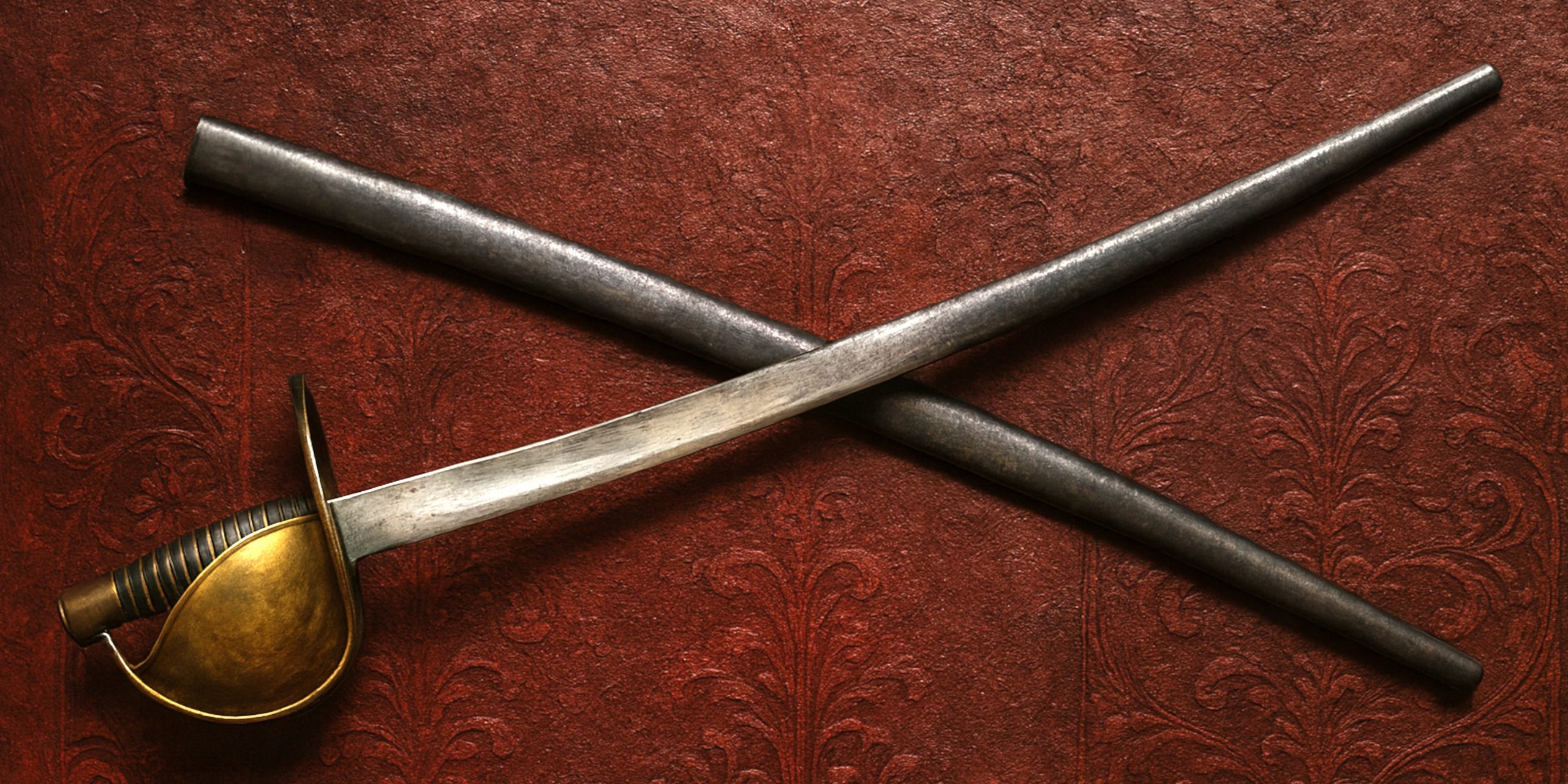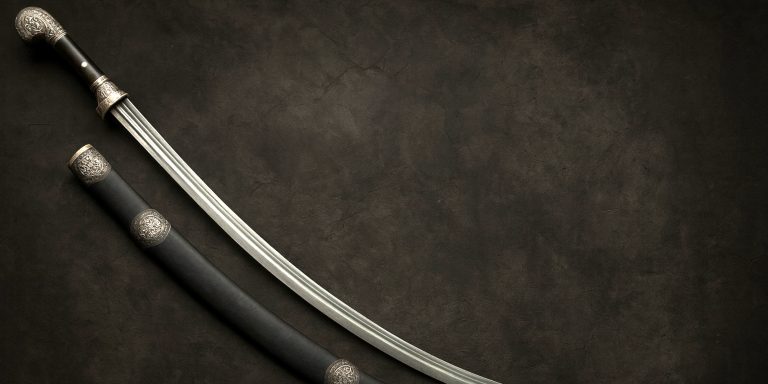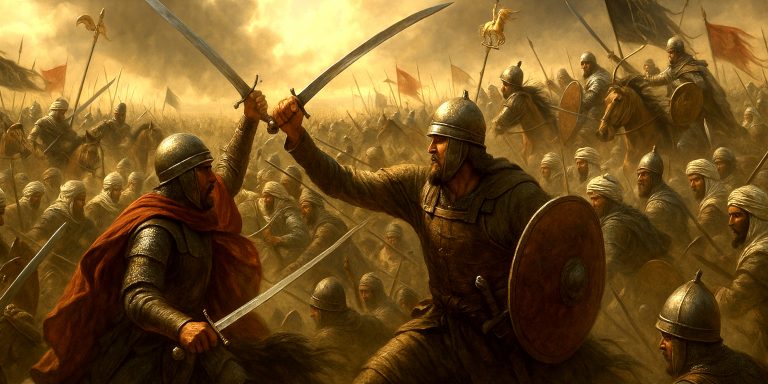
The US M1860 Naval Boarding Sabre was the close-quarters weapon of choice for sailors and marines during the mid to late 19th century. Designed for brutal shipboard fighting, it was compact, sturdy, and practical, allowing easy use in tight spaces where a full-length sword would be cumbersome. While it rarely saw the kind of heroic use often romanticised in naval tales, the M1860 remains one of the most iconic American edged weapons of its era, bridging the gap between traditional sabres and modern bayonets.
Specifications
| Specification | Detail |
|---|---|
| Name | U.S. Model 1860 Naval Boarding Sabre |
| Origin | United States |
| Introduced | 1860 |
| Overall Length | Approx. 32 inches (81 cm) |
| Blade Length | Approx. 26 inches (66 cm) |
| Blade Type | Single-edged, curved blade with a clipped point |
| Weight | Around 1.9 lbs (0.86 kg) |
| Hilt | Brass half-basket guard with leather or ribbed grip |
| Scabbard | Leather with brass fittings (later steel in some models) |
| Primary Users | U.S. Navy sailors and marines during the American Civil War |
History and Evolution
- Predecessor Influence: The M1860 drew inspiration from earlier naval cutlasses such as the M1841 and the British 1804 pattern. Both influenced its curved, short design suited for boarding parties and ship defence.
- Civil War Deployment: The weapon entered service shortly before the American Civil War, issued widely to Union naval forces. Its simplicity made it easy to mass-produce, and its compact design suited shipboard combat and security duties.
- Manufacturers: Chiefly produced by Ames Manufacturing Company of Chicopee, Massachusetts, a major supplier of U.S. military swords. Some smaller contracts went to other firms during wartime shortages.
- Post-War Use: After 1865, many sabres were kept in naval armouries as secondary or ceremonial arms. They remained standard until the M1917 cutlass replaced them.
- Design Variations: Early examples had leather grips, but later wartime issues often used cast brass or ribbed materials to simplify production.
Advantages and Disadvantages
Advantages
- Compact size ideal for cramped naval decks
- Durable brass guard offered strong hand protection
- Easy to maintain in harsh marine environments
- Balanced weight allowed quick, slashing strikes
- Intimidating visual presence during boarding actions
Disadvantages
- Limited reach compared to longer sabres or bayonets
- Relatively heavy for its short size
- Awkward to use against firearms or polearms
- Of limited use once naval combat moved toward ranged weaponry and artillery
Comparison with Similar Weapons
| Weapon | Origin | Length | Key Feature | Comparison to M1860 |
|---|---|---|---|---|
| British 1804 Naval Cutlass | United Kingdom | ~29 in | Brass guard, heavier build | M1860 was lighter and better balanced |
| French M1833 Cutlass | France | ~31 in | Steel guard, curved blade | Slightly longer, less hand protection |
| U.S. M1841 Naval Cutlass | United States | ~28 in | Heavier, wider blade | M1860 was slimmer and more refined |
| M1917 Naval Cutlass | United States | ~31 in | Straight blade, steel guard | Successor with modernised features and simplified build |
Legacy
The M1860 Naval Boarding Sabre symbolises the final age of melee combat at sea. By the early 20th century, close-quarters boarding actions had become obsolete, replaced by gunfire and naval artillery. Yet the sabre remained a ceremonial weapon for decades, carried in parades and by naval guards of honour.
Collectors and historians view it as a quintessential American fighting blade, bridging the craftsmanship of early swordmaking with the industrial age of warfare. Its influence extended to later military sidearms and even ceremonial naval dirks.
Where to See
You can find authentic M1860 Naval Boarding Sabres displayed in several major collections:
- Smithsonian Institution (Washington D.C.) – Features multiple examples with original scabbards and naval insignia.
- Naval History and Heritage Command (Washington Navy Yard) – Displays wartime variants used during the Civil War.
- Springfield Armory National Historic Site (Massachusetts) – Includes Ames Manufacturing examples and production documents.
- Mariners’ Museum (Virginia) – Exhibits recovered shipboard weapons from Union and Confederate vessels.
Collector’s Guide and Auction Prices
Collecting Tips:
- Look for clear Ames Manufacturing marks or “U.S.N.” engravings on the blade.
- Original leather scabbards are rare and add considerable value.
- Avoid heavily polished blades, as these often lose historical authenticity.
- Provenance linking a sabre to a specific ship or officer increases value significantly.
Condition Categories:
| Condition | Description | Estimated Value (GBP) |
|---|---|---|
| Excellent (museum grade) | Pristine blade, intact scabbard, clear maker’s marks | £1,200–£1,800 |
| Good | Minor wear, small scabbard repairs, readable markings | £800–£1,100 |
| Fair | Missing or damaged scabbard, dull blade, corrosion spots | £500–£700 |
| Poor / relic | Severely corroded or incomplete, for display only | £200–£400 |
Recent Auction Highlights:
- An Ames 1862-marked sabre with original scabbard sold for £1,560 at Rock Island Auction (2024).
- A Union Navy-engraved example fetched £2,100 at Hermann Historica in 2023.
The Seven Swords Takeaway
The US M1860 Naval Boarding Sabre captures a pivotal moment in naval history, when cutlasses still held sway aboard wooden warships even as steam power and rifled guns were changing the world. Practical, rugged, and undeniably iconic, it represents both the twilight of traditional naval combat and the dawn of industrial-era warfare.



